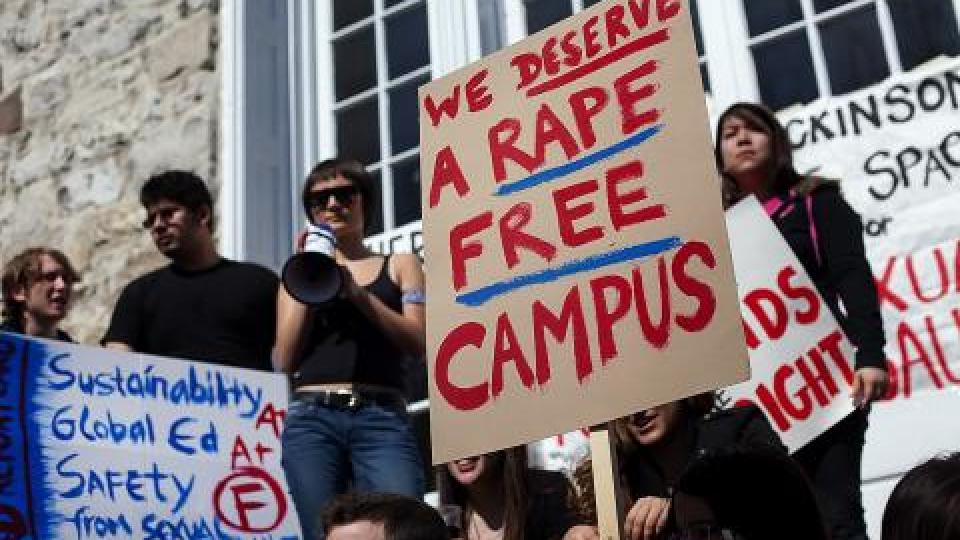Institutional misogyny rampant on university campuses

The Australian Human Rights Commission (AHRC) released its long-awaited national report on sexual assault and sexual harassment at Australian universities on August 1. While much of the corporate media coverage deemed the results “shocking”, they are not really surprising.
The three main conclusions from Change the course are: instances of sexual assault and sexual harassment are taking place far too frequently; the underreporting of sexual assault and sexual harassment to university administrations is significant; and universities have a lot of work to do to prevent abuse and to support those who have been abused.
This report is the product of decades of advocacy and activism, led by students and feminist collectives on campuses across Australia and internationally. Without the students’ campaign, we would not have the data which will fuel the much needed campaign to combat rape culture.
The national survey measured the experiences of more than 30,000 students across the 39 universities represented by Universities Australia. Of those surveyed, more than half — 51% — were sexually harassed on at least one occasion in 2016 and 6.9% were sexually assaulted on at least one occasion in 2015 or 2016. A significant number of these instances of harassment and assault were committed in a university setting.
It is clear from the survey that women experience sexual assault and sexual harassment at disproportionately higher rates than men: they were almost twice as likely to be harassed in 2016 and more than three times as likely to be sexually assaulted in 2015 or 2016.
The report noted that, overwhelmingly, men are the perpetrators of both sexual assault and sexual harassment and that “a significant proportion of students who were sexually assaulted or sexually harassed knew the perpetrator, who was most likely to be a fellow student”. It also found that “postgraduate students were almost twice as likely as undergraduate students to have been sexually harassed by a lecturer or tutor from their university”.
The survey authors say the results add to the body of evidence showing disturbing levels of sexual violence and violence against women.
“Although no directly comparable data is available, the prevalence and nature of sexual assault and sexual harassment in a university setting largely corresponds with what is already known about the prevalence and nature of sexual violence in the broader Australian community.
“Existing research indicates that women aged between 18 and 24 experience sexual assault and sexual harassment at disproportionate rates. Since the age of 15, one in five women, and one in 22 men in Australia have experienced sexual violence. Young women aged between 18 and 24 — the age group of a significant cohort of university students — experience sexual violence at more than twice the national rate. 18 to 24-year-old women are also more likely than men in this age group to have experienced sexual harassment in the workplace.”
AHRC made nine recommendations — eight aimed at universities and one aimed at university colleges. It said that Vice Chancellors must take direct responsibility for implementing the recommendations of the report and that university colleges and residences must commission an independent review of factors contributing to sexual harassment and sexual assault.
Women’s collectives on Melbourne and Sydney universities organised vigils and rallies on August 1 and 2 respectively to highlight the report’s findings. They demanded that universities act immediately and not sit on the findings or send them off to a committee.
Sydney University’s co-women’s officer Imogen Grant told a rally at the University of Sydney that universities, particularly hers, had been complicit in covering up the extent of the abuse and called for the denial and cover-ups to end.
“The report confirms what we’ve known for decades: that a culture of rape has become endemic through the inaction of universities. The rhetoric that universities have been ‘waiting for the data’ until they can take action is a lie. It exposes [the universities’] absolute mistrust of survivors’ and supporters’ own testimonies, and has been nothing but a delaying tactic.
“As a result of this lack of support, survivors are dropping out of their degrees due to trauma. Women and queer people are being locked out of an accessing an education — all of which cumulatively contribute to the pay gap and gender inequality at large.
“The sick irony is that this it is how universities treat survivors and mirrors how abusers treat victims.”
Several unions including the National Tertiary Education Union, the Australian Services Union, the Maritime Union of Australia and the NSW Nurses and Midwives Association joined the rally in Sydney.
In early June, students at Western Sydney University devised a log of claims to deal with rape culture, including a student-devised education campaign on how institutional sexism drives sexual violence aimed at students and staff; having a permanent specialist sexual assault counsellor on all campuses (as the Australian National University has committed to doing); mandatory staff awareness raising and training; and more and better lighting on university campuses.